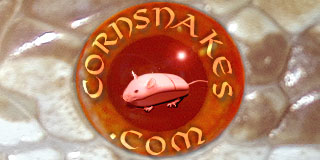MysticExotics
(formerly NWHeather)
You guys should PM Rich Hume, and see if he has pics of his super.
Good idea, I will do that!
You guys should PM Rich Hume, and see if he has pics of his super.
He talked about it, a little, and its origins, on his podcast with Corn on the Pod.
































I think you could be on to something with the cheek pattern, but should also be prepared for the chance that there are no markers for super tesseras.
The reason for this relates to mechanisms of dominance. One mechanism is called "dominant-negative." Dominant negative is when a dominant mutation is dominant because the gene product of the mutant allele is not only nonfunctional, but basically poisons the product of the wt allele. This can happen when the protein product of a gene functions as a "dimer" or "multimer," meaning that the protein product of the gene has to bind to other copies of itself to carry out its function. If a member of the complex is the product of the mutant dominant-negative allele, the complex no longer functions, and the phenotype is similar to what you would get if the animal were homozygous for two non functional alleles at that locus, hence the term dominant (since the allele is dominant)-negative (since the phenotype is similar to homozygous for a null allele). With dominant-negative mutations, the phenotype is usually not exacerbated when the animal is homozygous for the dominant-negative allele.
But hopefully you do find reliable markers!
(indeed, strictly, if a trait does have heterozygous traits it isn't dominant, but co-dominant)
As far as I understand it, "codominant" is misused frequently in herpetoculture; most genes labeled as codom are in fact incomplete dominant. I'm not sure of any true codom genes existing in corns or ball pythons.
I've always seen the example of a red flower with a gene that, when homozygous, renders it pure white. If the white allele is incomplete dominant to wild type, it has a reduced effect over the wild allele, turning a heterozygous flower pink. If it is codominant with wild type, you end up with a white and red splotched flower in the het form, with one allele or the other expressing in any given part of the flower.
I imagine this is vastly oversimplified, but this is how I've always understood the difference between the two terms.
